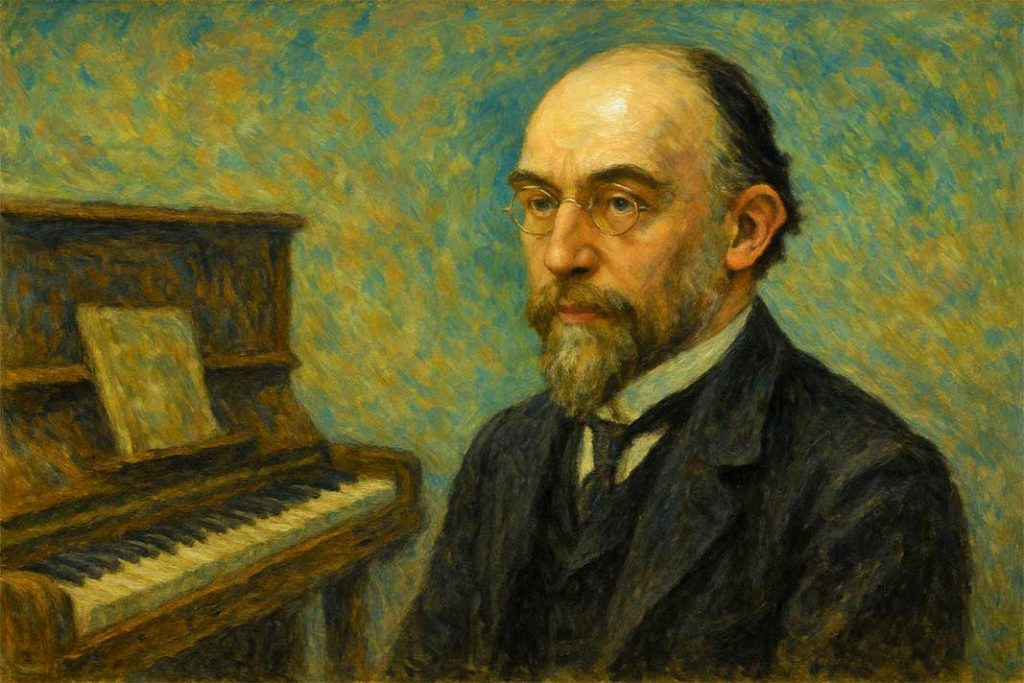A Composer You Already Know
If you’ve ever heard the haunting, dreamlike notes of Gymnopédie No.1, you’ve already met Erik Satie — whether you realised it or not. His music drifts through films, adverts, cafés, and playlists everywhere, often mistaken for “relaxation music.” But behind those gentle chords was one of the strangest and most rebellious composers France ever produced.
A Rebel Among Romantics
Satie (1866–1925) didn’t much care for tradition. While his contemporaries were filling concert halls with grand symphonies and thunderous piano concertos, Satie was writing short, spare pieces that almost whispered instead of shouted. He stripped away the heavy layers of Romantic music and left us with something pure, transparent, and oddly modern.
Wit Written into Music
He also had a sharp wit. Some of his piano scores include absurd directions like “play as light as an egg” or “with astonishment.” Others contain entire passages of humorous commentary that the performer isn’t meant to read aloud. In a world that took classical music rather seriously, Satie was happily poking fun.
Stranger Than Fiction
Satie’s life was every bit as eccentric as his music. He once owned two grand pianos stacked one on top of the other (he claimed never to play the top one). His wardrobe contained seven identical grey velvet suits so he could wear the same outfit every day without worrying about decisions. He also founded his own religion, carried a hammer for protection, and sometimes signed his letters with invented titles like “Gymnopedist” or “Velvet Gentleman.” This oddball lifestyle only added to his legend and made him stand out in Paris’s bohemian Montmartre, where he was a familiar, slightly shabby figure wandering the streets.
An Influence Beyond His Time
Despite his peculiarities, Satie’s ideas had a massive influence. He inspired Debussy, Ravel, and later composers like John Cage. His minimalist style even foreshadowed ambient and film music. Put simply, the music we take for granted today — simple, atmospheric, emotional without being heavy-handed — owes a huge debt to Satie.
Why Pianists Love Satie
And yet, his pieces aren’t just historically important; they’re deeply playable. Unlike Chopin or Liszt, Satie doesn’t demand finger acrobatics. His beauty lies in timing, touch, and expression — qualities any pianist, beginner or advanced, can explore.
Less Really Is More
So the next time you hear one of his Gymnopédies or Gnossiennes, don’t just think of them as background music. They’re the work of a quiet revolutionary — a man who showed that less can be more, and that a single chord can speak louder than a hundred notes.
Learn and Play Satie Yourself
If you’d like to dive deeper into Satie’s world and actually play his music, Pianoforall Classics By Ear: Erik Satie → makes a perfect starting point. His pieces are not only iconic but wonderfully accessible — and once you’ve played them yourself, you’ll hear them with completely new ears.
New to piano? Build the basics first with this chords-first online guide.



